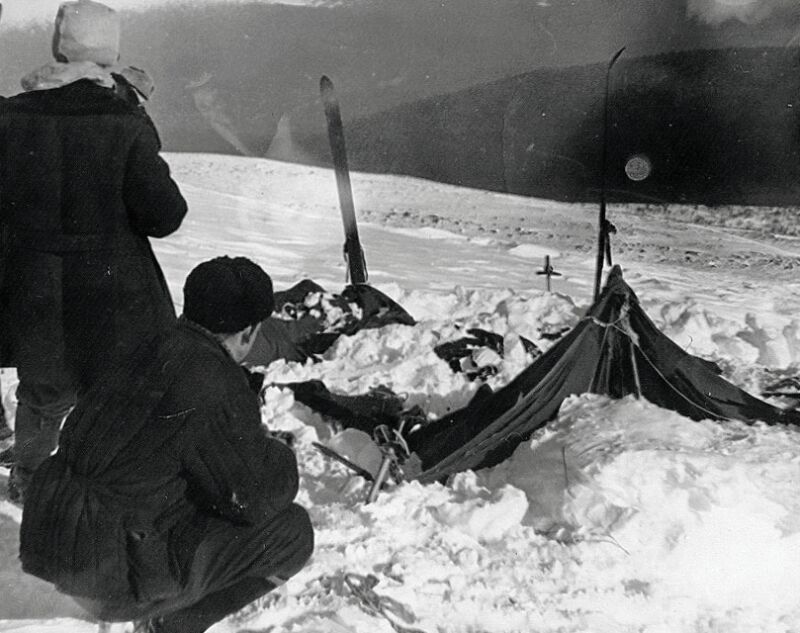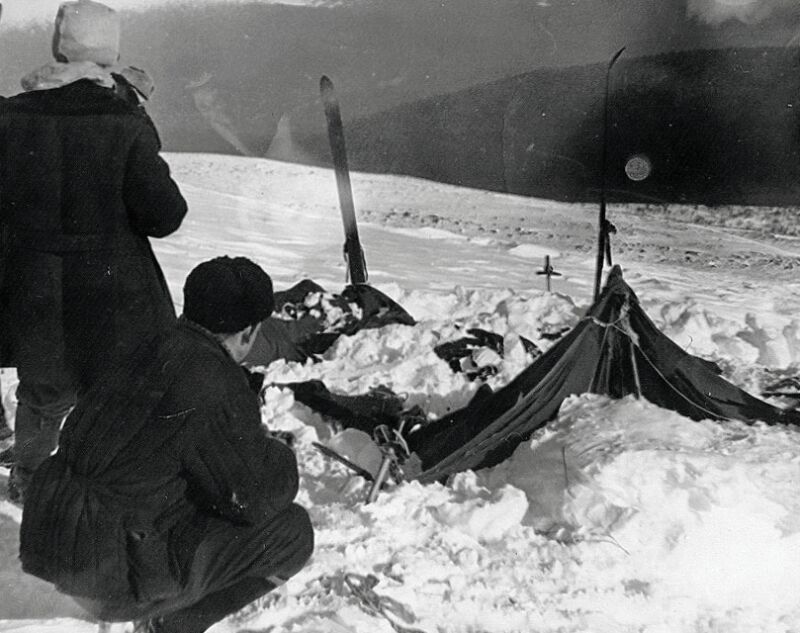
Enlarge / A view of the tent the adventurers stayed in as the rescuers found it on Feb. 26, 1959. The tent had been cut open from inside, and most of the skiers had fled in socks or barefoot. (credit: Anonymous | USSR investigators)
By the time the rescue team helicoptered to the remote Dyatlov Pass in late February 1959, the nine Russian adventurers—seven men and two women, all highly experienced cross-country skiers—had been dead for nearly a month. Nothing about the scene seemed right. The adventurers’ tent had been sliced open from the inside, and in its husk lay rucksacks, neatly arranged boots, and a plate of sliced pork fat. The rescuers found the victims themselves over half a mile downslope from their camp, some of them barefoot and almost naked. The primary cause of death was hypothermia—temperatures would have been well below zero degrees Fahrenheit the night they fled—but two of the deceased were missing their eyes, and another her tongue. Four had suffered severe trauma to their heads and chests, as if they’d been in a car crash. These were not injuries consistent with a death by avalanche.
Over the decades, what became known as the Dyatlov Pass incident has prompted many a conspiracy theory. It must have been aliens that made the Russians flee to an icy death, as evidenced by the fact that some of the adventurers’ clothes bore traces of radioactivity. Or a Yeti had stumbled upon the camp. Or, more plausibly, the local humans didn’t appreciate the group’s intrusion on their lands. In the end, none of these were particularly convincing to the Russian government, which officially blamed an avalanche as the culprit, all those curious circumstances notwithstanding.
Now, more than 60 years later, scientists say they’ve got new evidence to back up that claim, but with a twist: The killer was probably a peculiar kind of avalanche. Inspired by previous work that modeled realistic snow for the Disney film Frozen, the researchers simulated how a relatively tiny avalanche could have struck the camp, forcing the adventurers to flee, and severely injuring some of them.





